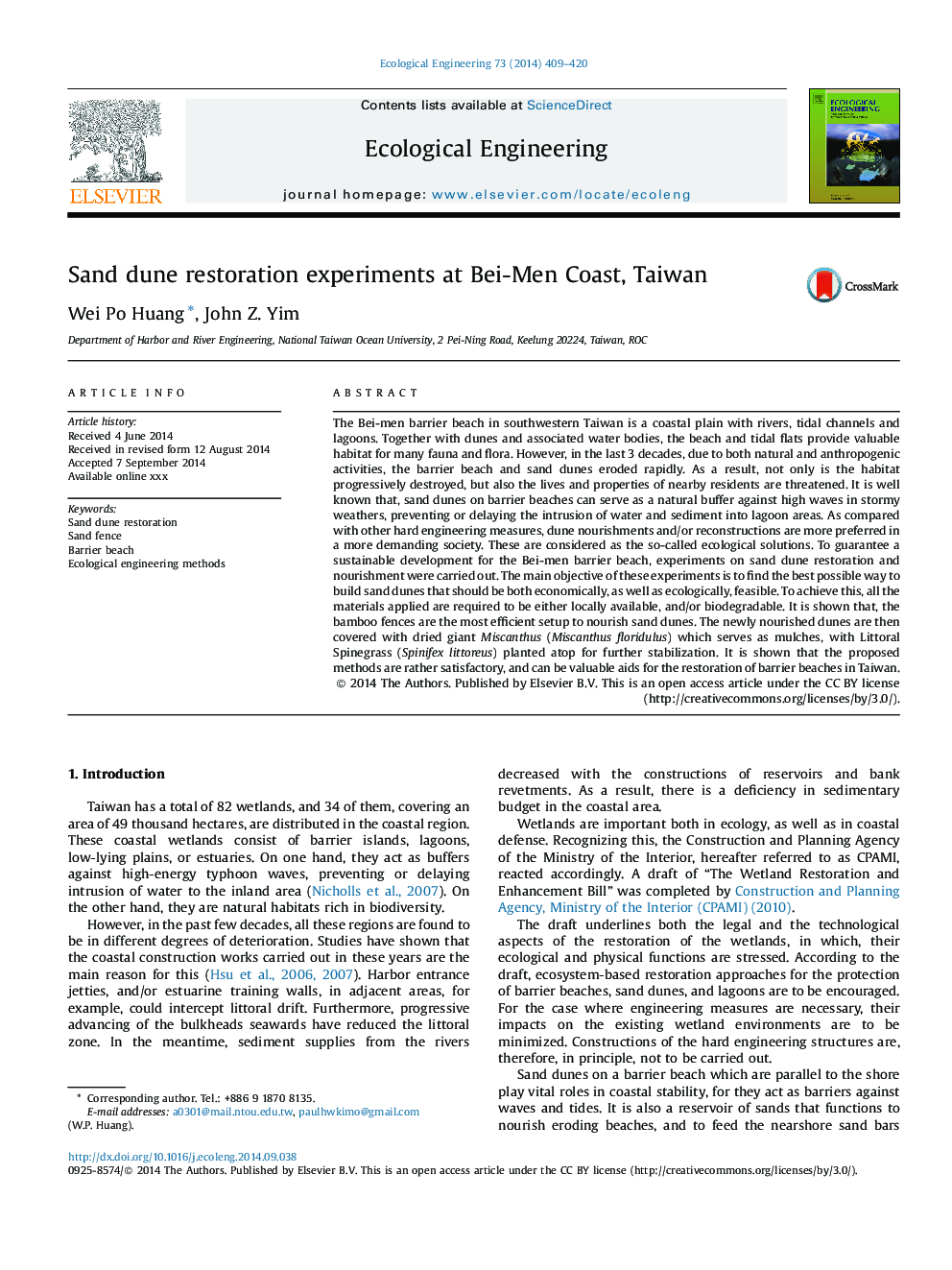| Article ID | Journal | Published Year | Pages | File Type |
|---|---|---|---|---|
| 6301961 | Ecological Engineering | 2014 | 12 Pages |
Abstract
The Bei-men barrier beach in southwestern Taiwan is a coastal plain with rivers, tidal channels and lagoons. Together with dunes and associated water bodies, the beach and tidal flats provide valuable habitat for many fauna and flora. However, in the last 3 decades, due to both natural and anthropogenic activities, the barrier beach and sand dunes eroded rapidly. As a result, not only is the habitat progressively destroyed, but also the lives and properties of nearby residents are threatened. It is well known that, sand dunes on barrier beaches can serve as a natural buffer against high waves in stormy weathers, preventing or delaying the intrusion of water and sediment into lagoon areas. As compared with other hard engineering measures, dune nourishments and/or reconstructions are more preferred in a more demanding society. These are considered as the so-called ecological solutions. To guarantee a sustainable development for the Bei-men barrier beach, experiments on sand dune restoration and nourishment were carried out. The main objective of these experiments is to find the best possible way to build sand dunes that should be both economically, as well as ecologically, feasible. To achieve this, all the materials applied are required to be either locally available, and/or biodegradable. It is shown that, the bamboo fences are the most efficient setup to nourish sand dunes. The newly nourished dunes are then covered with dried giant Miscanthus (Miscanthus floridulus) which serves as mulches, with Littoral Spinegrass (Spinifex littoreus) planted atop for further stabilization. It is shown that the proposed methods are rather satisfactory, and can be valuable aids for the restoration of barrier beaches in Taiwan.
Related Topics
Life Sciences
Agricultural and Biological Sciences
Ecology, Evolution, Behavior and Systematics
Authors
Wei Po Huang, John Z. Yim,
